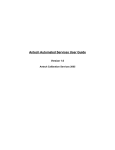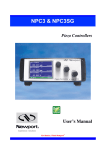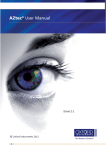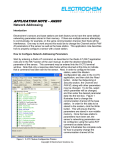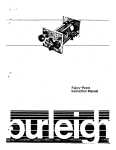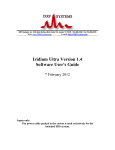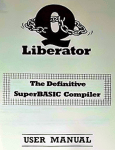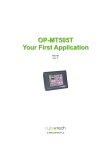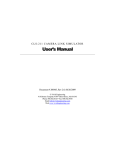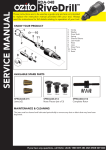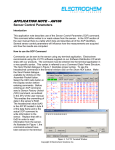Download Scanning Tunneling Microscope
Transcript
Scanning Tunneling Microscope Background Get a general book on the operation of the STM. There is tons of stuff available on the web also. Review the user manual for the Burleigh STM. Suggested experiments 1. Prepare a fresh graphite surface by the tape peel method. Bring the STM tip into contact with the surface of the graphite as discussed in the Burleigh reference manual. Before you take an image, try to determine the relationship between tunneling current and piezo voltage, or displacement. We assume that zdisplacement is proportional to the piezo voltage to first order. Measure the change in piezo voltage due to a step change in the tunneling current. You may find it convenient to use Labview to measure this accurately. Note the large drift in piezo voltage for long times (>1s). Do you see the expected dependence based on quantum mechanical tunneling? How do you think the data acquisition software copes with this large drift when acquiring an image? 2. Look at the graphite surface and measure the various atomic spacings. Determine the crystal structure. Compare “constant height” versus current modes. Try different bias voltages. Does the STM image all of the expected atoms? Why or why not? Is the STM calibrate in the x and y directions based on the known lattice constants of graphite? If not, try to determine calibration factors. 3. Using the calibration factors determined in the previous experiments, determine the lattice constant and crystal structure of MoS2. 4. Look at a sample of freshly deposited gold or a freshly etched semiconductor. (optional) Analysis: Use the following open source program to analyze your data: Gwyddion (Avialable at http://gwyddion.net/ ) Using Gwyddion you can generate spatial Fourier transforms of your STM image files. Explain which FFT features relate to actual features on the surface and which represent artifacts. Are the extra atoms of MoS2 observable in the FFTs? Can you extract the lattice parameter(s) better from the FFT? Can you explain all of the FFT components, including the origin of the spurious components? Questions: It is tempting to think that constant height mode works by keeping the piezovoltage constant and monitoring the current. This is not how it works in practice. How does it actually work? References (available at www.sfu.ca/simonw/p431) Curson et al Eur. J. Phys 1999 Hembacher et al PNAS 2003 Physics 431 2008-1 Watkins Park et al. J. Phys. Chem Wiemer et al Phys. Rev. B 1988 Appendix : STM analysis software The Burleigh STM stores data in special “.img” file format. This can now be read by several freeware analysis programs. One example is a product called “gwyddion” (http://gwyddion.net/features.php) This program enables the user to view STM files, perform linescans and other analysis, as well as quantitative 2-d Fourier transforms of STM images. Examples are shown below: Below: STM image for graphite obtained by PHYS431 student: Physics 431 2008-1 Watkins Below: Linescan taken from the above image: Physics 431 2008-1 Watkins Below: 2-d Fourier transform of the above STM image. The dots show the expected peaks for a triangular lattice. The vertical lines are due to scanning artifacts inherent in any scanning probe measurement. Physics 431 2008-1 Watkins




